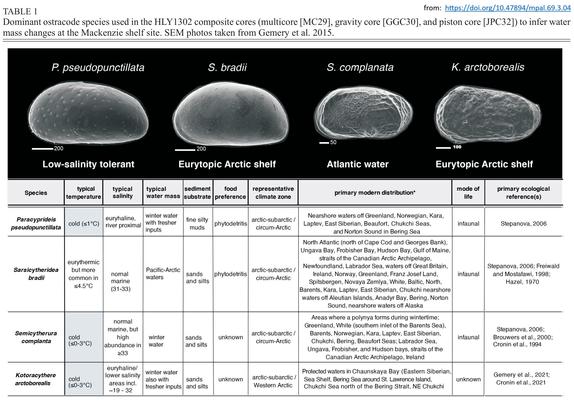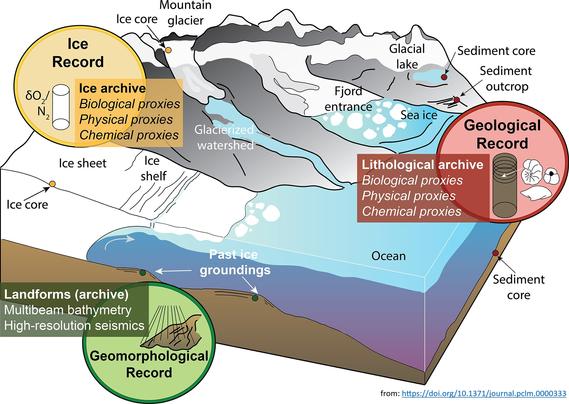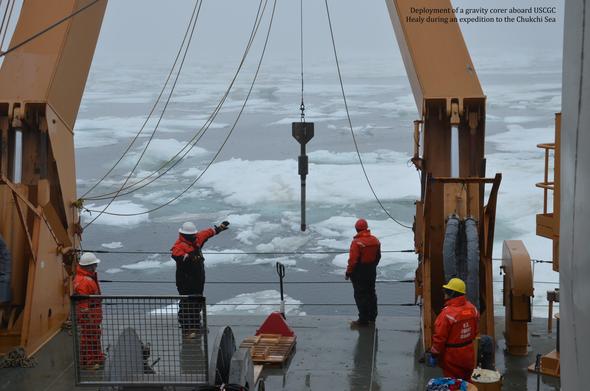Land-Sea Linkages In The Arctic – What Is Paleoclimatology?
--
https://www.usgs.gov/programs/ecosystems-land-change-science-program/science/land-sea-linkages-arctic <-- shared technical article
--
https://doi.org/10.1371/journal.pclm.0000333 <-- shared example of paper
--
https://doi.org/10.47894/mpal.69.3.04 <-- shared example of paper
--
[who doesn’t like a good foraminifera! (memories of staring down a microscope for hours at grad school) 😊 ]
#fedscience #Paleoclimatology #Paleoecology #Paleooceanography #Icesheet #climatechange #Paleoanthropology #Seaice #Marineecosystems #GIS #spatial #mapping #spatialanalysis #model #modeling #spatiotemporal #foraminifera #arctic #change #cryosphere #ArcticOcean #glacial #interglacial #Holocene #future
#Paleooceanography
Large parts of eastern Europe and western Asia used to be covered by a freshwater lake bigger than the Mediterranean.
#PaleoOceanography #ParatethysSea #geology #fossils #PlateTectonics
https://www.science.org/content/article/rise-and-fall-world-s-largest-lake
Sunday #Plankton Factoid 🦠🦐
Another #paleooceanography #zooplankton are the beautiful #Pteropoda sea butterflies & sea angels, holoplanktonic mollusks with modified parapodia swimming foot. They live in surface waters of every ocean, and are vital to the #CarbonCycle. Their delicate calcium carbonate shells dissolve away quickly, so fossils only really found in the shallow tropics sediments. Fun fact: can be so dense as to create false bottom signals in echosounders.
https://twilightzone.whoi.edu/explore-the-otz/creature-features/pteropod/
Sunday #Plankton Factoid 🦠🦐
Next #zooplankton important to #paleooceanography with a long geological record are #Foramanifera. Like #Radiolaria forams are unicellular amoeboid protozoa, planktonic or benthic with spectacular shaped Tests made of mostly calcium carbonate with pores they exude pseudopodia to capture prey or uptake DOC. Some have symbiotic algae. Known for millenia, but their complicated life cycles, alternating haploid and diploid aren't well documented.
https://en.m.wikipedia.org/wiki/Foraminifera
Sunday #Plankton Factoid 🦠🦐
Next posts are on #zooplankton which form the sediments of the seafloor. Starting with #Radiolaria, single-celled amoeboid protozoa. Non-motile but control buoyancy with gas vacuoles. Known for spectacularly intricate cortical shells made of siliceous opal covered by an extended cytoplasm they use to engulf plankton and detritus. The shells (radiolarian-ooze) cover large swaths of the tropics and are used in the study of #paleooceanography.
https://www.radiolaria.org/what_are_radiolarians.php
.. and be re-energised by the next generation! #paleooceanography #climate



